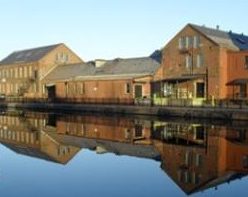3000 quarts of milk were used in the city in 1891. There were 491 cows in Holyoke in 1888. That gives one the scope of the quantity of milk that needed to be looked into. Milk is very important for the development of infants. However the purity is always in question due to the retailers that water down the milk or use spoiled milk. One method the city used was to test the specific gravity of the milk. Specific gravity is the ratio of the density of a liquid compared to water. The city would test the specific gravity with a lactometer. Since the specific gravity of milk is 1.03, milk should settle lower than milk. Along with other tests such as chemical tests, the milk can be analyzed.
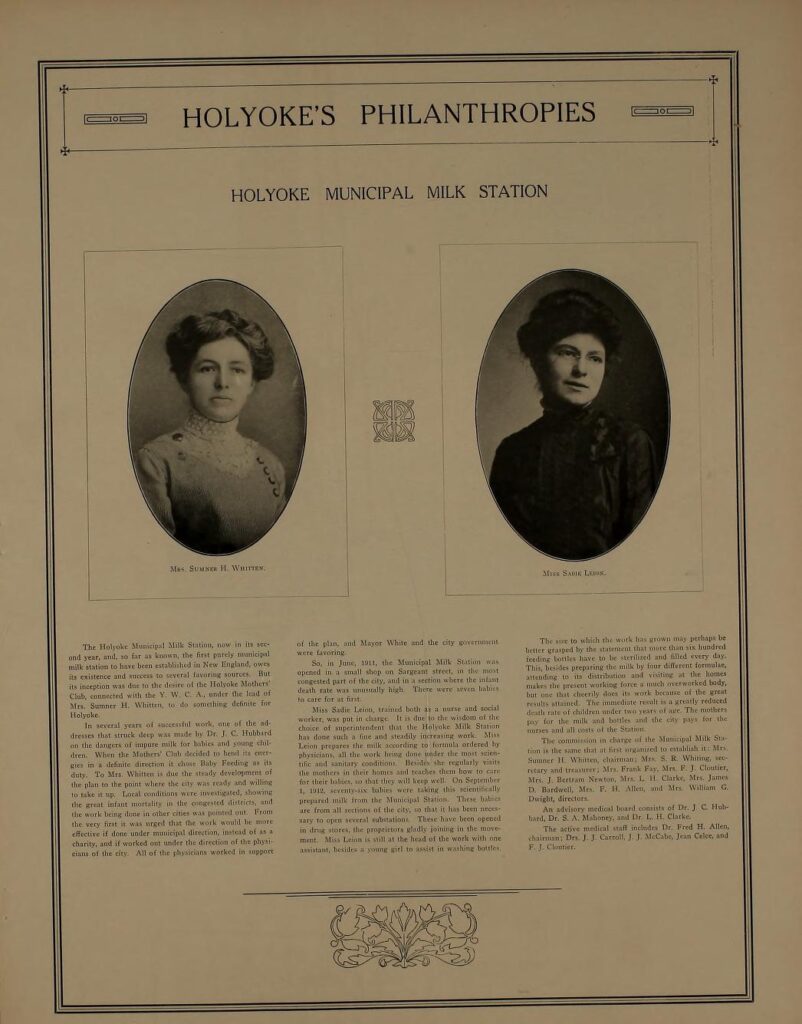
This Milk Station was at the southwest corner of South Bridge and Sargeant Streets (34 to 36 Sargeant Street).
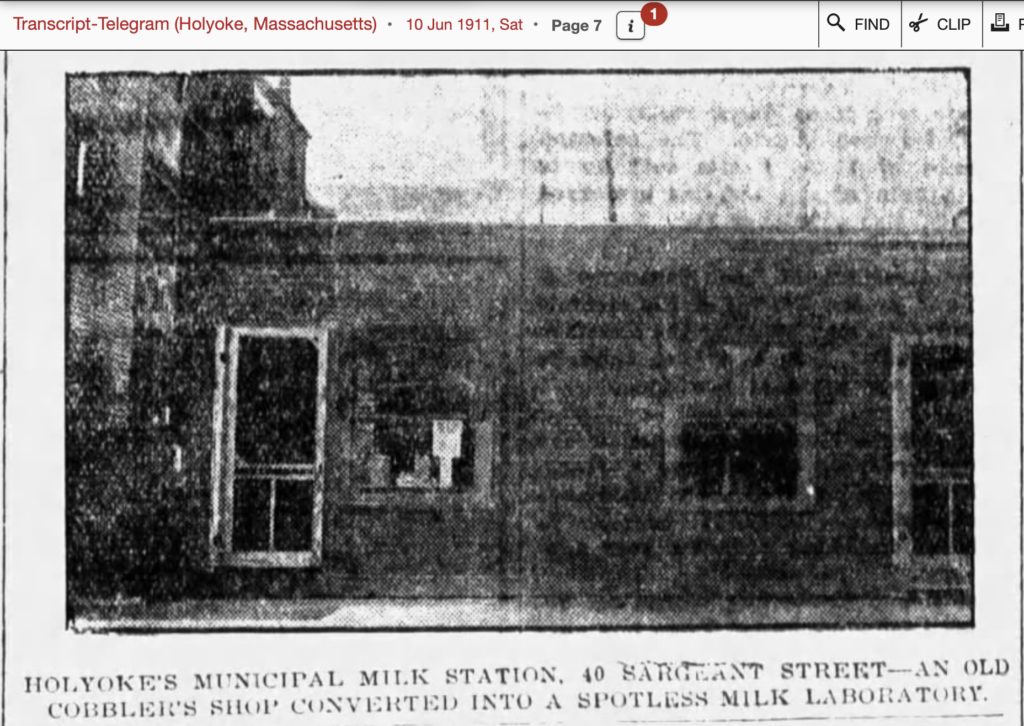
Holyoke Infant Hygiene Association started on June 1 1911 to help mothers get pure milk for their infants.
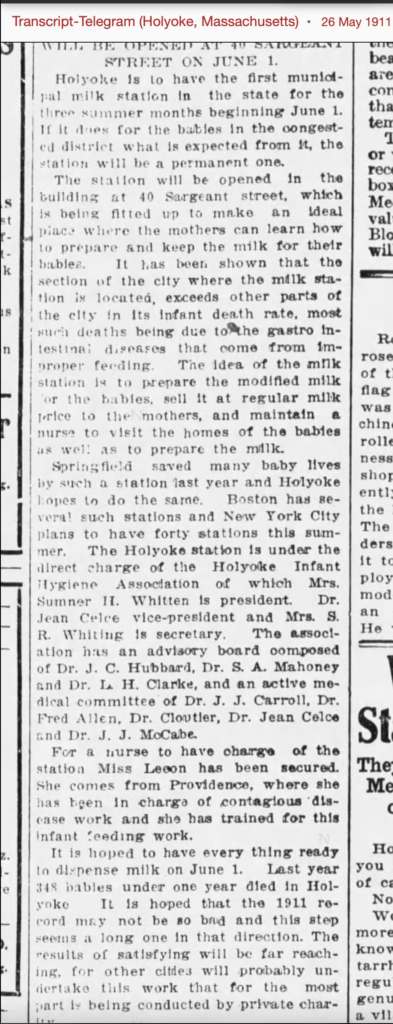
The first distribution was on September 1 1912.
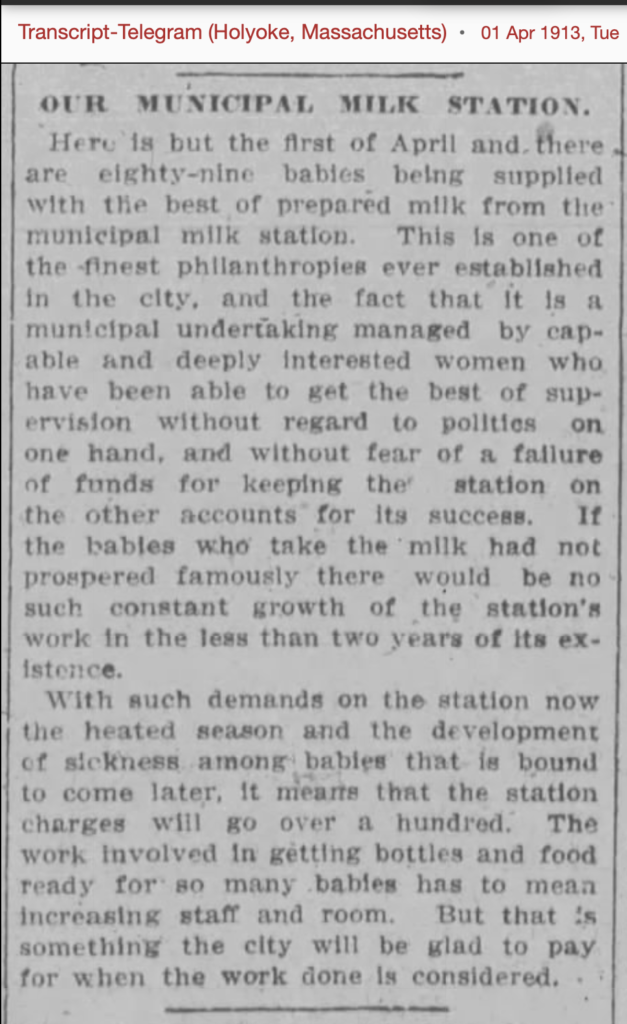
The Holyoke Municipal Milk Station was later part of the Child Welfare Commission. This Child Welfare Commission was one of the departments of the City of Holyoke. It started on May 20 1919. This Child Welfare Commission was started by Minnie Ryan Dwight (1873-1957).
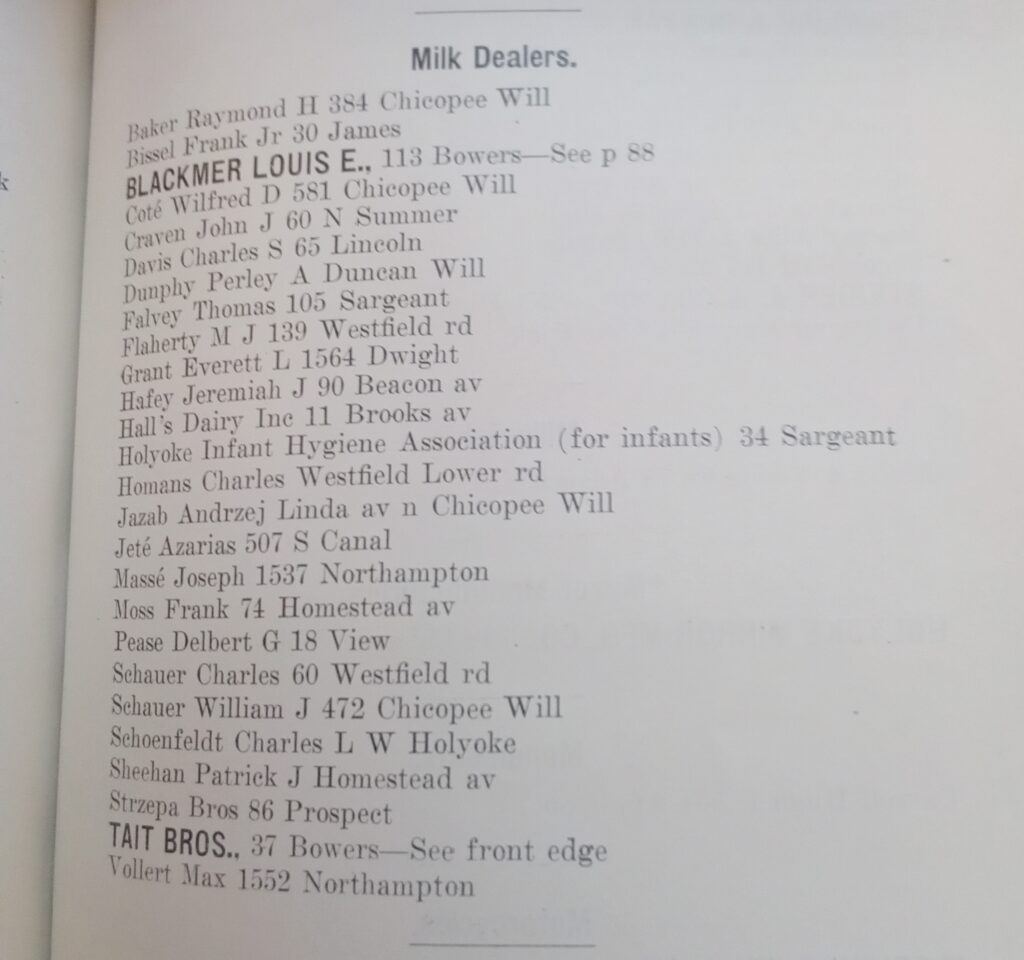
From October of 1923 it was located at 17 Spring Street and there it was called the Municipal Child Health Center and Milk Station. Luella Thomson is the nurse in charge. The milk is still distributed from a 34 Sargeant Street location for a short time.
The annual Holyoke City Report mentions the Milk Station in 1928 but not in 1929 so it might have been fully integrated into the Child Welfare Department in that year. All reports from 1930 onwards do have the Milk Station in the Child Welfare Department. In 1934 the Milk Station Laboratory and Center were terminated for good. One reason was a positive reason and the other negative. The increase in home instruction had led to mothers’ being independent but on the other hand the worldwide depression had caused a lack of money. [The Milk Station Laboratory was where milk formulae were made.]
The picture is from the 1937 paper and shows the Milk Station. It must have been turned into a dental clinic.
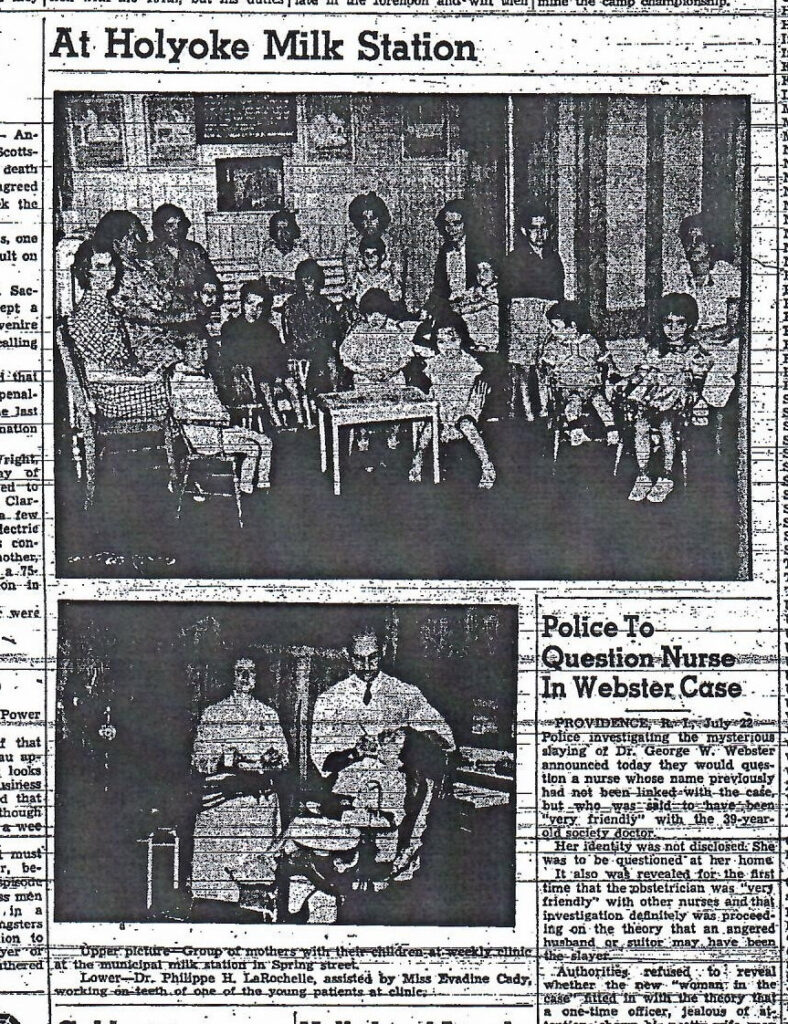
Look at this decrease in infant deaths per 1000.
| 1910 | 150 |
| 1915 | 100 |
| 1920 | 90 |
| 1925 | 70 |
| 1930 | 50 |
| 1935 | 40 |
| 1940 | 30 |
| 1945 | 22 |
| 1950 | 12 |
Sadie Leion was the first nurse and social worker at the milk station.
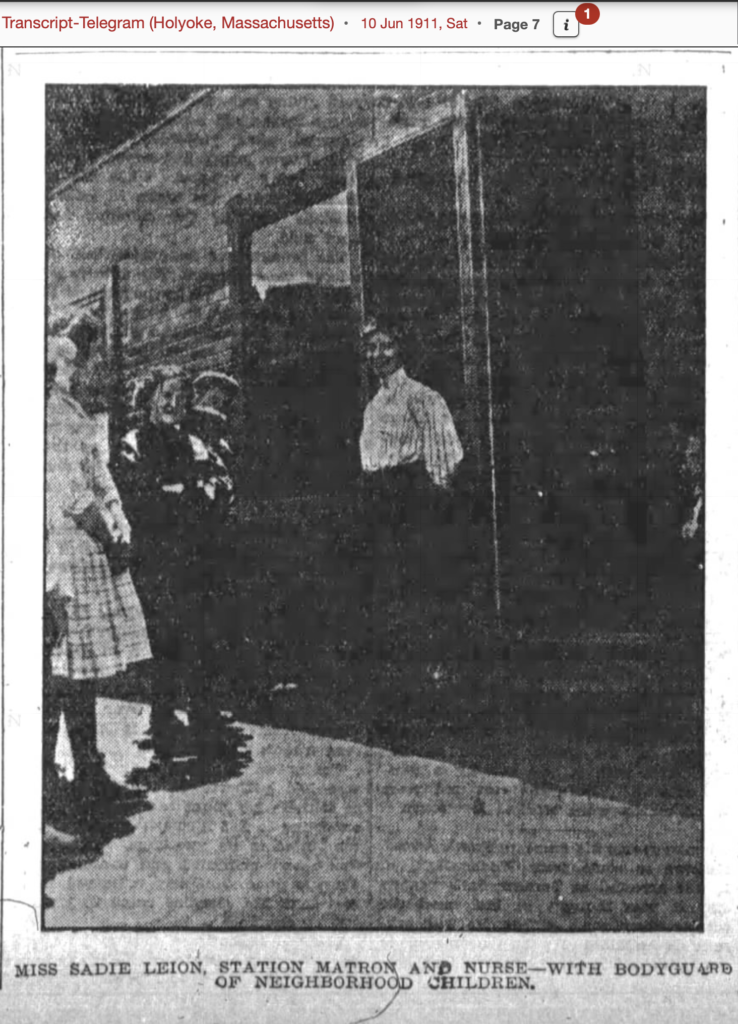
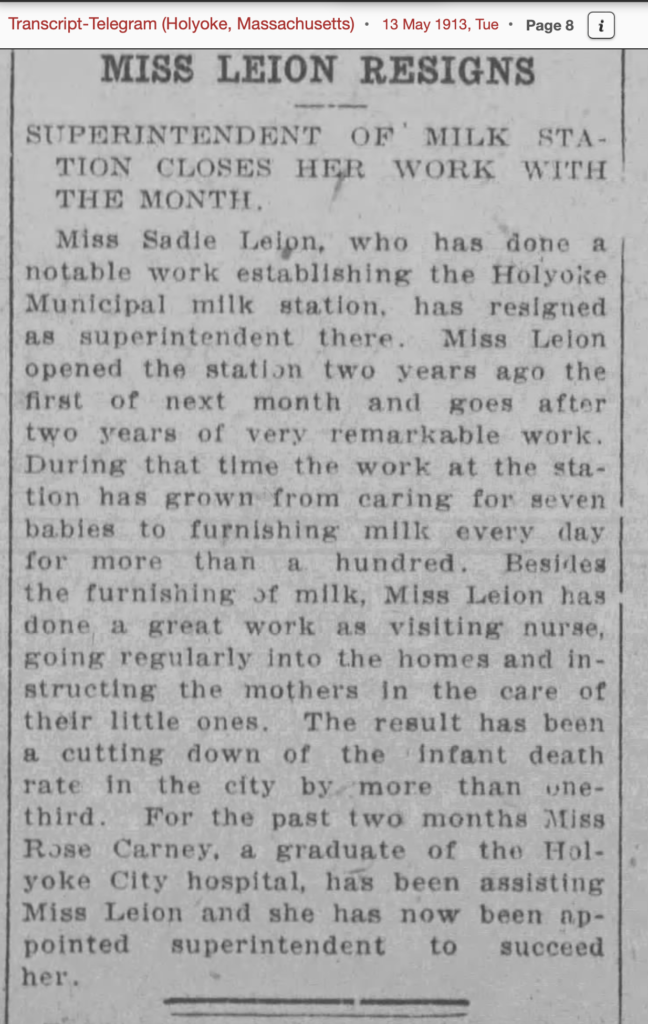
Laura Antz Whitten was one of the driving forces.
There were many substations of the milk station around Holyoke:
- Hebert Drug (Ely)
- Rigali Fruit (Lyman)
- Demenei Fruit (Sargeant)
- Martin’s (Hampden)
- Schmitter Drug (South Street)
- Ridgewood Pharmacy (Northampton Street)
- Mielke Filling Station (Main)
- Curran Brothers (Main)
Most very large city across the United States had milk stations in the 1910s. Read about the New York City one HERE in a complete analysis. It seems to have been started as a private charity venture by the owner of Macy’s.
LINKS
